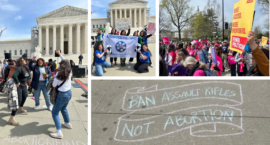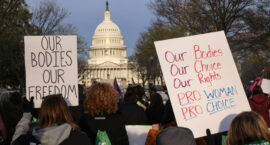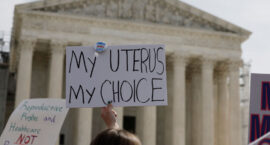The lead plaintiff in the mifepristone case heard before the Supreme Court this week is a shadowy organization calling itself the Alliance for Hippocratic Medicine (AHM). The group’s name is clearly intended to evoke the Hippocratic oath, popularly understood as the commitment of doctors to “first do no harm.”
To claim, as the Alliance for Hippocratic Medicine does, that forcing a woman or child to give birth against her will, even if childbirth will seriously injure or even kill her, honors the principle of “do no harm” is perverse, but also very revealing. It makes clear that the “harm” that AHM and other anti-abortion ideologues care about is wholly imaginary.












